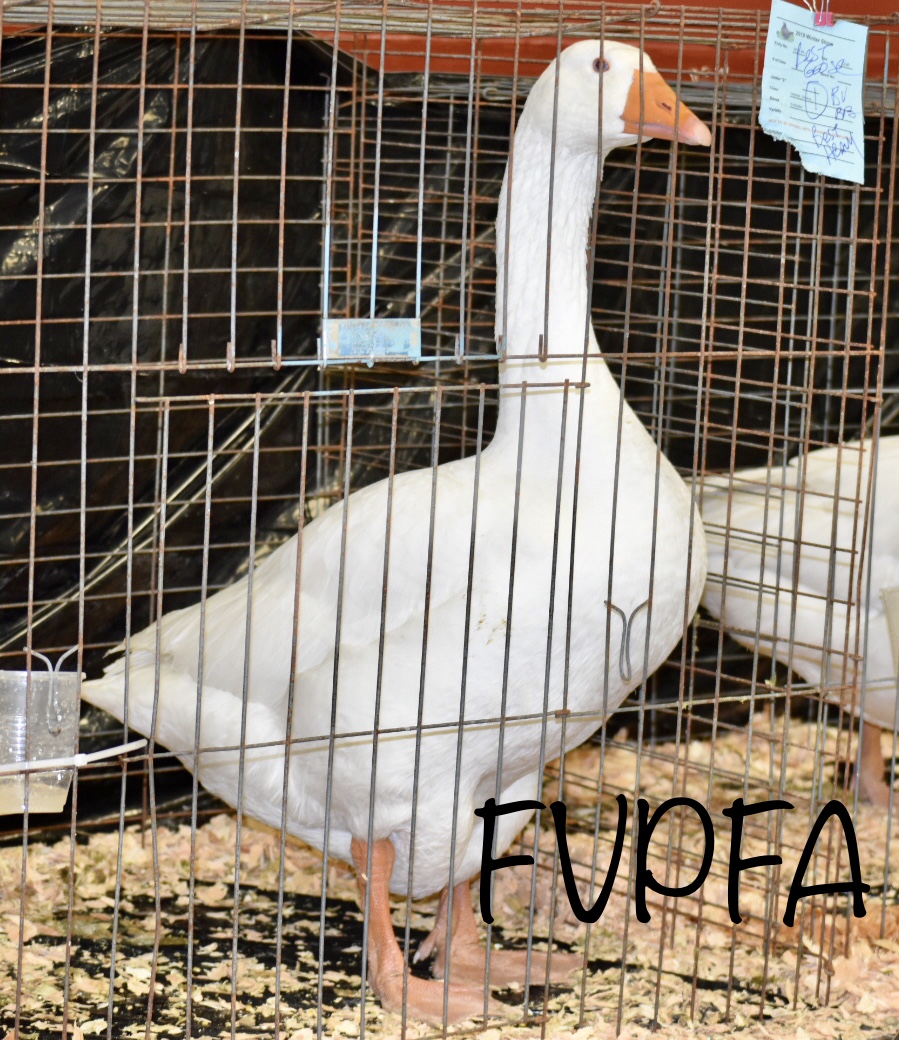Embden Leg Color
This article on the Embden leg color is being republished from Acorn Hollow Bantams website with permission from Lou Horton.
Time after time over the past few years, I and many other judges have been confronted by the same dilemma when judging the class of Embden geese. At the top of the class are one or two birds of superior type, size and condition but we know that the top Embden will likely not go any further. Why not? Because the breed standard calls for deep orange legs and feet and the winning Embden’s legs and feet cannot be accurately said to be orange. They are pink, not orange and there is no getting around that fact. The judge knows that the one point deduction for incorrect leg/foot color will not likely be fatal at the breed level but may make a difference at the Heavy Class or Championship level when competing against very good birds of other breeds. How did it happen that an obvious problem with leg and foot color could become so widespread in so popular a breed of goose? Apparently, the problem is a genetic predisposition toward pink leg and foot color which the breed comes by honestly from its progenitor, the Graylag goose. Authority on waterfowl genetics, Dave Holderread says that Graylags naturally have leg/foot color which is much more pink than the deep orange required by the APA Standard for Embdens. If so, how is it that the Embden was standardized with orange legs/feet? Evidently, the recessive orange color was preferred by early breeders and it was selected for instead of the dominant pink color gene as the breed was developed. The orange color can be re-enforced (assuming that it is present) by heavy feeding with corn. Unfortunately, when the price of corn skyrocketed, the amount of corn in most types of processed feeds declined. When combined with the understandable tendency of most Embden breeders to emphasize traits in their birds that they deemed more important than leg/foot color, the number of birds that carried the recessive gene for orange leg/foot color has evidently declined.
How did it happen that an obvious problem with leg and foot color could become so widespread in so popular a breed of goose? Apparently, the problem is a genetic predisposition toward pink leg and foot color which the breed comes by honestly from its progenitor, the Graylag goose. Authority on waterfowl genetics, Dave Holderread says that Graylags naturally have leg/foot color which is much more pink than the deep orange required by the APA Standard for Embdens. If so, how is it that the Embden was standardized with orange legs/feet? Evidently, the recessive orange color was preferred by early breeders and it was selected for instead of the dominant pink color gene as the breed was developed. The orange color can be re-enforced (assuming that it is present) by heavy feeding with corn. Unfortunately, when the price of corn skyrocketed, the amount of corn in most types of processed feeds declined. When combined with the understandable tendency of most Embden breeders to emphasize traits in their birds that they deemed more important than leg/foot color, the number of birds that carried the recessive gene for orange leg/foot color has evidently declined.
I am sure that there still exists in most of the better lines of Embdens the genetic wherewithal to improve the color. Meanwhile, the feeding of controlled amounts of corn to enhance the orange pigment that is there will also enhance Embden’s chances in the show situation.
It might make sense for the APA Standard Committee to recognize the genetic realities (also present in other European breeds of geese, by the way) by mentioning the color problem in lists of common defects for the breeds affected.
By Lou Horton
